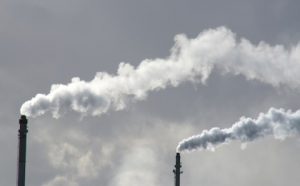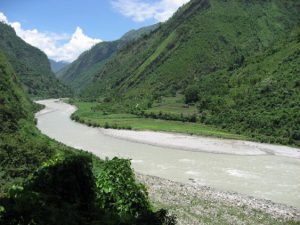There are only about 500 days to go before the global community expects a deal that will cut greenhouse gas emissions to rein in climate change. Developed countries – especially the US, Canada and Australia – have clearly indicated they will not come on board unless China, India and other large developing countries pledge to cut or at least cap their emissions.
In this scenario, India’s new government recently put the cat among the pigeons, with Prakash Javadekar, Minister for Environment, Forests and Climate Change, reiterating the position that India has a “right to grow” and in the process “net emissions may increase”. He also said India “cannot address the challenges of climate change unless it eradicates poverty through economic growth”.
If the minister’s feelings had not caught global attention already, he ensured that they did, by saying more or less the same thing at the UN Environment Programme summit in Nairobi. While agreeing that “we have to reduce carbon emissions”, Javadekar said, “But I have not created the carbon emission problems, which have been done by others. But I am not into any blame game. The issue is that I have a right to grow. These are the emerging economies.”
France is hosting the end-2015 climate summit where the global deal is expected. Javadekar’s statements gave an added urgency to the New Delhi visit of French foreign minister Laurent Fabius. One of his first meetings was with Javadekar and immediately after that, Fabius announced a special 1 billion Euro credit line to India for clean technologies. Reportedly, Javadekar had assured him that India would not be a deal breaker, but would need technical and financial help from developed countries to leap-frog to green technologies that would keep the country’s carbon emissions under control.
It is early days yet, but this could offer a possible way out of the climate negotiations logjam. On his part, Fabius made it clear that “the objective is to reach a global climate agreement that will involve all countries”. The only legally binding climate agreement negotiated earlier, the Kyoto Protocol, obliges only developed countries to cut their emissions.
Now, Fabius claimed, “China, US, Brazil are joining in. A hundred countries have committed to cap their emissions. India is part of this effort.”
And more sops are in the offing to ensure that India stays part of the effort. Immediately after his meeting with Javadekar, the French foreign minister outlined five areas of bilateral cooperation – carbon free energy through new technologies like offshore wind and ocean thermal; nuclear power; an Indo-French water network; conservation of the ecology of the Himalayas; and urban development in a green way.
Fabius admitted that “India has expressed concern that its development will be hampered due to a climate treaty. I have come here to learn (India’s concerns), not to lecture. But a climate treaty must have ambitious emission reduction targets; it must have fair participation from all countries, based on different capabilities and international responsibilities; equity will be a key point of this treaty. Trust and transparency will be its basis. It will strengthen international cooperation.”
Referring to his meeting with Javadekar, Fabius said, “The minister insisted on finance and technology, and he is right. We have to provide incentives to all countries” to join the treaty.
Detailed work on the treaty is already being negotiated under the aegis of the UN Framework Convention on Climate Change (UNFCCC). There was a two-week meeting of negotiators at the UNFCCC headquarters in Bonn early June to get on with the process. At that the meeting, India and many other developing countries reiterated their position that they should not be asked to take on any legally binding emission cap, since most of the greenhouse gases now warming up the earth’s atmosphere have been placed there by industrialized countries.
Meanwhile, global emissions keep rising, climate change gathers pace, and is already affecting farm output worldwide, making droughts, floods and storms more frequent and more severe and raising the sea level. In another hopefully-major step towards a 2015 climate treaty, the UN Secretary General has convened a meeting of heads of government during the UN General Assembly this September. The speech at that forum by India’s new Prime Minister Narendra Modi is being awaited with keen interest.
This article was first published by India Climate Dialogue






